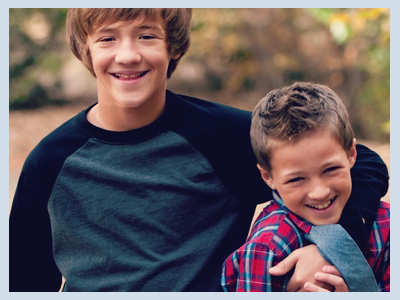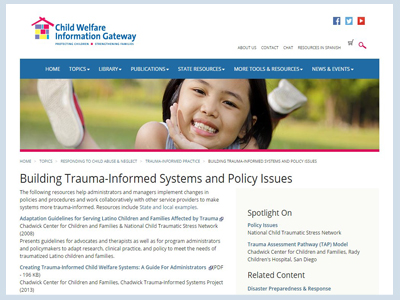Effects of Early Childhood Trauma on the Brain
Early childhood trauma has a profound impact on the brain. We know that many things happen in the mental, emotional, and neurological development of children who have been subjected to harm during the beginning phases of life. Dramatic alterations in their basic brain chemistry affect how their stress system reacts, the way they think, the way they trust, and the way they connect with other people. This is not just a “software” problem – as you’ve guessed, it’s a matter of “hardwiring” in the central nervous system.
Think of it this way. When a nursing child snuggles close to his mother’s breast, looks up into his mother’s eyes, and sees his own expression mirrored in his mother’s face, his brain wraps these sensory images in a network of positive neurochemical links. But if these warm and comforting experiences are lacking, or if a child’s interactions with a primary caregiver are frightening or traumatic, the growth of the “primitive brain” follows a very different path.
- When life is lived in a state of heightened fear and constant emergency, the brain reorganizes itself around the need for self-protection. Survival functions – “fight, flight, fright, or freeze” – take center stage. The individual becomes hypervigilant, continually on the lookout for danger and threats. High stress reactivity inhibits brain functions that are not absolutely essential for escape or survival, such as language development and the ability to process sensations. Sometimes this can lead to pain agnosia, or the inability to perceive and react to pain.
- Chronically elevated levels of stress-related hormones, such as cortisol, can cause significant damage to the limbic system (including the hippocampus and amygdala, which control verbal and emotional memories), producing symptoms similar to those connected with Post Traumatic Stress Disorder. The normal diurnal cortisol cycle is disrupted. Reduced integration between the right and left hemispheres and a smaller corpus callosum (the bundle of nerves connecting the two sides of the brain) appears to have the effect of inhibiting development of the left hemisphere. This asymmetry of brain function can lead to a number of undiagnosed learning disorders.
- High levels of stress hormones can also bring about a dangerous imbalance between excitatory and inhibitory neurotransmitters. Levels of dopamine, glutamate, and phenylethylamine (PEA)-the three brain chemicals most commonly associated with mental illness – are raised, while serotonin, a substance associated with the regulation of fear and agitation, is reduced. In some cases, alteration of GABA receptors (gamma aminobutyric acid), the brain’s primary inhibitory neurotransmitter, may trigger seizures similar to those associated with temporal lobe epilepsy, including tonic (tensing of muscles), clonic (convulsions) and absence (“check in, check out”) seizures.
On the surface, these conditions can easily be mistaken for other problems, such as mild autism or bipolar disorder. Children of abuse and trauma are essentially disconnected children. Though their behavior seems to indicate otherwise, they desperately want to be attached to someone at a deep and meaningful level; as a matter of fact, some of the most violent among them can also be the most tender-hearted. Unfortunately, the neurochemistry of fear gets in their way. Children can suffer from the effects of altered brain chemistry.
Research shows that toxic stress has significant negative impacts on the development of key structures in childhood brain development. The areas of the brain affected are:
- Hippocampus. The hippocampus is crucial to learning and memory. Early stress can reduce hippocampus size, as well as it’s ability to regulate levels of the stress hormone cortisol after a traumatic event.
- Corpus Callosum. The largest white matter structure in the brain, the corpus callosum regulates communication between the two hemispheres of the brain. It also contributes to arousal, cognitive function, and emotion. Early stress can reduce size and volume of the corpus callosum.
- Prefrontal Cortex. The prefrontal cortex is the primary brain structure involved in emotional regulation, cognitive feedback, emotional regulation, rational decision-making, behavioral modulation, and impulse control. Neglected or abused children often have a smaller, less developed prefrontal cortex.
- Cerebellum. The cerebellum plays a key role in motor behavior (movement) and executive function (self-control and regulation). Studies show that maltreated or abused children have decreased cerebellum volume.
- Amygdala. While research does not show structural differences in the amygdala in abused or maltreated children, research does show that neglect and abuse can result in increased amygdala activity. Since the amygdala plays a role in assessing danger and initiating emotional responses to threats, overactivity in the amygdala can trigger the release of stress hormones later in life, even when the stress is relatively mild.
The research is definitive. Early trauma has an adverse effect on brain development. These differences in brain structure play out emotional, behavioral, and social functioning later in life.






